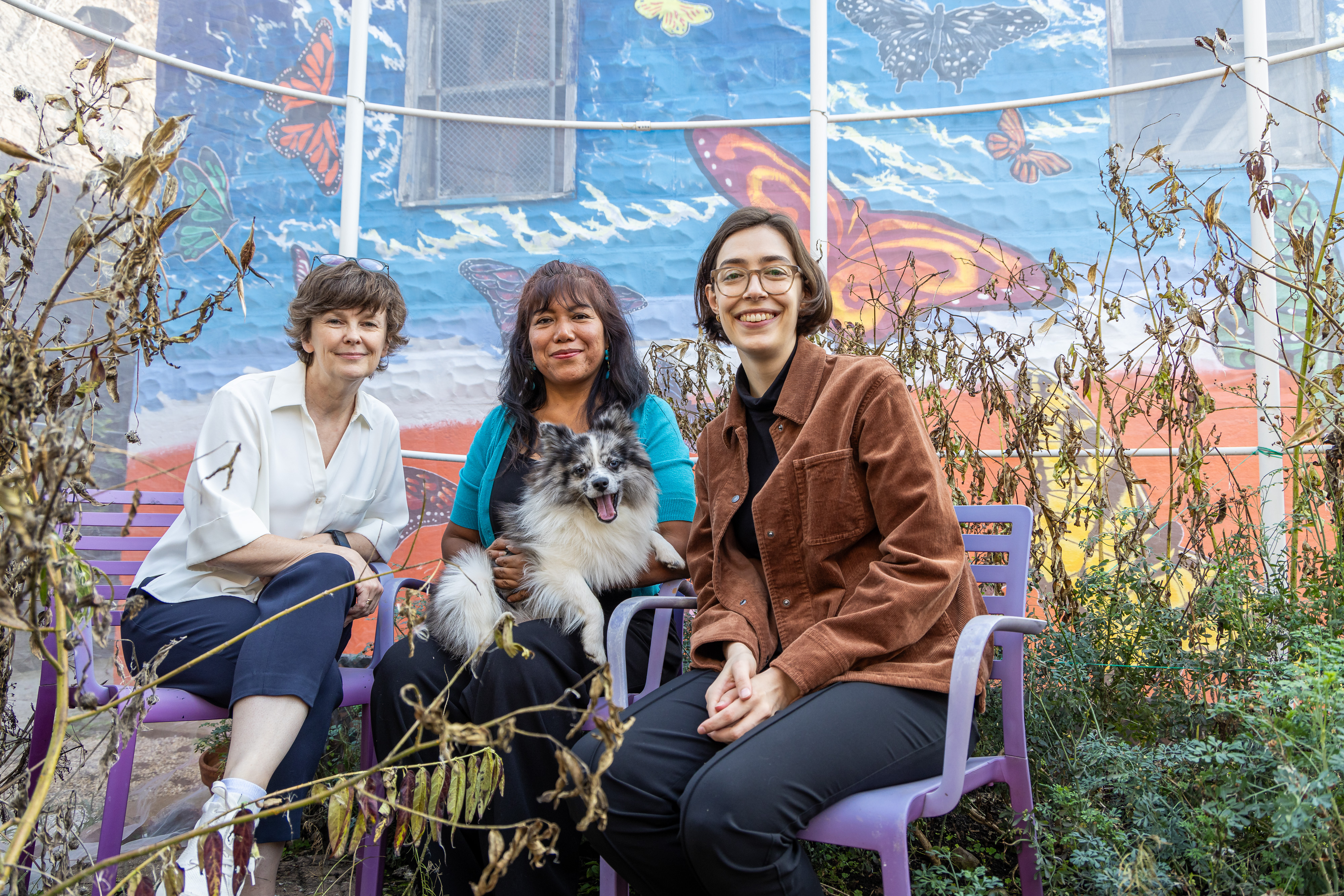CHICAGO — How do visitors wander through a leafy green park or buzz around a museum exhibit? When planning public spaces, designers can track how people move within them. Psychologists and geographers at DePaul University are creating a new protocol to measure another dimension: Whether people of diverse backgrounds feel welcome in a community space.
The National Science Foundation has awarded $750,000 to Kimberly Quinn, professor of psychology, and Michelle Stuhlmacher, assistant professor of geography and geographic information systems (GIS), to fund the research. Quinn and Stuhlmacher are also collaborating with environmental neuroscientist Kimberly Meidenbauer of Washington State University, as well as social psychologist Sophie Trawalter, and infrastructure designer Leidy Klotz, both from the University of Virginia.
With community nonprofit partners, their aim is to develop a social impact protocol that architects and urban planners can use to ensure spaces are equally enjoyable for visitors, regardless of their socio-demographics.
“We know that there are racial, ethnic, and socio-economic disparities in access to good space. So, when there is access to space, we want our social impact protocol to speak to a sense of community belonging in the area,” Quinn said.
Equity, community at the heart of the project
To begin, DePaul researchers are recruiting hundreds of participants from diverse ethnic groups and engaging with the communities they hope to serve with this work. The project will incorporate an advisory board of community groups in Chicago and other major cities. These community partners will inform and contribute to the research, including El Paseo Community Gardens, Women for Green Spaces, and the Black Farmers Collective in Seattle.
 Left to right: Kimberly Quinn, Claudia Galeno-Sanchez, and Michelle Stuhlmacher inside a butterfly enclosure in Chicago’s Pilsen neighborhood. (Photo by Jeff Carrion / DePaul University)
Left to right: Kimberly Quinn, Claudia Galeno-Sanchez, and Michelle Stuhlmacher inside a butterfly enclosure in Chicago’s Pilsen neighborhood. (Photo by Jeff Carrion / DePaul University)
According to Claudia Galeno-Sanchez, the coordinator of Women for Green Spaces, influences such as financial and housing instability make it difficult for communities to organize greener spaces in their neighborhood.
“We are asking for 125 trees and a native plant pollinator garden in Harrison Park, which have been really hard for us to get,” Galeno-Sanchez says. “We are in the middle of gentrification. I want to have a cleaner and more beautiful Pilsen, but my neighbors and I want to be able to stay and enjoy our work.”
Researchers are creating a protocol that will help community partners advocate for more equitable spaces.
“Governments want to see data, and our hope with this research grant is to support community organizers in speaking to governments, cities, and city planners about this issue,” Quinn says. Community partners are already helping to guide the focus of the work.
"At DePaul, there is a big emphasis on working with the community and communicating relevant results back out to them,” Stuhlmacher says.
Paula Acevedo, Co-Director of El Paseo Community Gardens, agrees with this approach. She believes the research collaboration with community partners can bring about “new perspectives in garden design that fosters more inclusive and diverse involvement.”
Psychology and GIS: Tracking movement and emotions in urban spaces
The ambitious, interdisciplinary project will span seven studies incorporating social psychology, geography, environmental neuroscience, and infrastructure design. Using wearable technology, GPS mapping and mobile applications, researchers will track participants’ emotions and actions within built spaces.
 Left to right: Kimberly Quinn, Paula Acevedo, and Michelle Stuhlmacher in El Paseo Community Garden in Chicago’s Pilsen neighborhood. (Photo by Jeff Carrion / DePaul University)
Left to right: Kimberly Quinn, Paula Acevedo, and Michelle Stuhlmacher in El Paseo Community Garden in Chicago’s Pilsen neighborhood. (Photo by Jeff Carrion / DePaul University)
Quinn has contributed to existing research on space and emotions in museums, determining if guests are interacting with the exhibits how the curators intended. This research project is filling a gap in knowledge about the psychological effects of public spaces and urban design.
“There’s not much published on it yet. These studies will go beyond asking people whether they feel good or not in public spaces, but also measure how their bodies are responding to it. It’s totally exploratory,” Quinn says.
Researchers will employ mobile app surveys, brain scans and eye tracking glasses. “The beauty of eye tracking is that the infrared sensors that track eye movement can tell us exactly where you’re looking,” Quinn explains. “The analysis gives us scan paths and heat maps; bright spots that show exactly what people attended to in the space.”
All findings will be matched with spatial data. “Data visualization is where GIS can excel,” Stuhlmacher says. “If we have movement trackers on people and we're looking at how they're moving through a space, we can also pull satellite imagery of that plaza or park and understand how green that space is.”
Quinn is ready to put this translational research project into motion.
“When I moved to Chicago 12 years ago, I made it a point to get an apartment close to the lake and its parks. It made all the difference for me,” Quinn says. “That was the big catalyst for me, realizing not everybody has access to public spaces or feels welcome when they do. This research has the potential to help us change that.”
###
Sources:
Kimberly Quinn
k.quinn@depaul.edu
Michelle Stuhlmacher
michelle.stuhlmacher@depaul.edu
Media Contact:
Kristin Claes Mathews
kristin.mathews@depaul.edu
312-362-7735